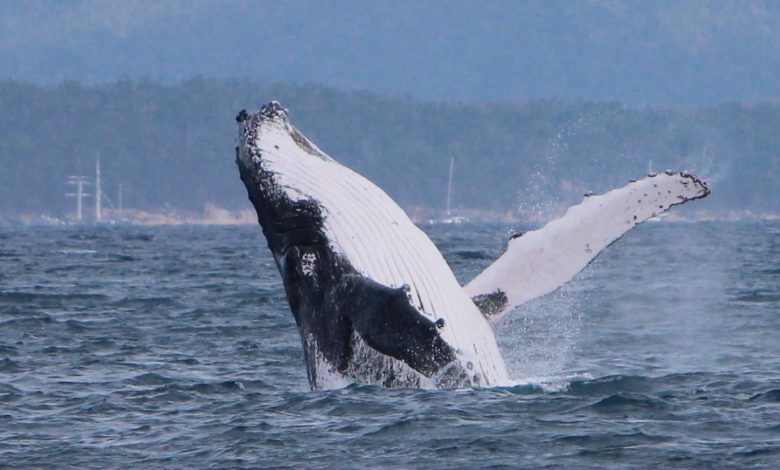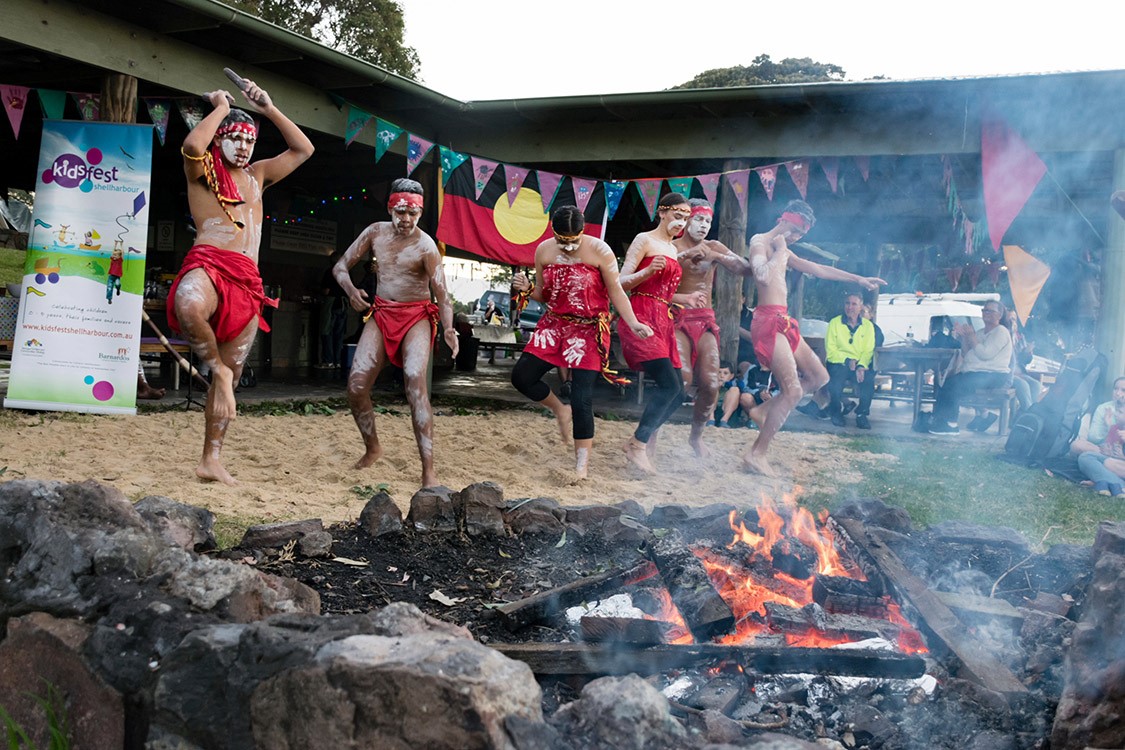
Special ceremony to mark the start of The Whitsundays 2023 Whale season
Traditional Owners of The Whitsundays will host a special ‘welcome to the whales’ ceremony from 5 pm on Friday, June 16
Each year between June and October, thousands of whales – especially Humpbacks – migrate north from the cold waters of Antarctica to breed and give birth within the warm and calm tropical waters of The Whitsundays, situated in the heart of the Great Barrier Reef.
To mark the official start of the 2023 whale season, Traditional Owners of The Whitsundays will host a special ‘welcome to the whales’ ceremony from 5 pm on Friday, June 16.
Our latest AccomNews print issue is available now. Read it HERE
The sacred Indigenous event at Airlie Beach Foreshore will be held in partnership with local organisations including Tourism Whitsundays and Master Reef Guides of the region and will be followed by a movie night presented by Whitsundays Reef Guardian Council.
Archaeological research suggests that Aboriginal people have inhabited The Whitsundays for at least the past 9000 years, and they hold a deep cultural connection to the whales. Master Reef Guides – who are champions of the Great Barrier Reef and work closely with high-standard tourism businesses and bodies that operate throughout the World Heritage-listed wonder – regularly consult with First Nations peoples to learn from their teachings regarding whales in The Whitsundays.
“There’s no doubting our First Nations peoples’ profound understanding of the habits of whales within the area. By working with the Traditional Owners of The Whitsundays, we’ve gained very valuable insights to ensure we’re adequately respecting and protecting marine life in the region, especially this time of year,” says Crystal Lacey, Director of Little Fish Tourism and member of the Master Reef Guides programme – an initiative of the Great Barrier Reef Marine Park Authority (GBRMPA), the Association of Marine Park Tourism Operators and Tourism and Events Queensland.
“We’re truly grateful to the Traditional Owners for allowing The Whitsundays community to participate in formally welcoming the whales this year, as well as the many other cetaceans – that is, dolphins and porpoises – which also live and visit the area,” adds Ms Lacey.

The event will see Traditional Owners in full traditional dress lead the ‘welcome to the whales’ ceremony. Open to locals and tourists, children are encouraged to wear blue to the ceremony. The Traditional Owners will invite children to be painted in traditional markings. As per Indigenous custom, boys will be marked by male Traditional Owners and girls will be marked by female Traditional Owners.
Children will then be guided to put their hand-prints on a traditional painting of a mother and calf Humpback to signify the community’s bond and connection with the whales. In keeping with long-established First Nations ritual, a smoking ceremony will then take place, before an ancient whale chant sung by the Traditional Owners.
Following the ceremonial proceedings, representatives of the Ngaro people will speak about their cultural connection with the whales, what the start of the whale season means to the Traditional Owners of the region, and the deep-seated cultural significance of the season’s first arrival of whales to The Whitsundays.
A film by Master Reef Guides about The Whitsundays and the cetaceans that live and visit the area will follow the ceremony, before the commencement of Whitsundays Reef Guardian Council’s alfresco screening of The Snail and the Whale movie at 6 pm.
The Whitsundays is on track to become the world’s first Whale Heritage Area within a World Heritage-listed site. Currently, Hervey Bay on the Fraser Coast is the sole Whale Heritage Area within Australia.
Those lucky enough to capture imagery of whales within The Whitsundays are encouraged to upload their imagery to GBRMPA’s Eye on the Reef app to assist with tracking and long-term monitoring of marine wildlife.
WELCOME TO THE WALES CEREMONY BY TRADITIONAL OWNERS OF THE WHITSUNDAYS
WHEN: Friday 16 June 2023, from 5 pm to 6 pm AEST
WHERE: Airlie Beach Foreshore, The Whitsundays
WHY: Marking the official start of The Whitsundays’ 2023 whale season (June to October)
FACTS ABOUT WHALES AND TIPS FOR SPOTTING WHALES IN THE WHITSUNDAYS,
by Master Reef Guide, Crystal Lacey – aka ‘Little Fish’:
- There are two types of whales and the main difference between them is the way they feed and inside their mouths: Baleen whales, such as Humpbacks, have 270 to 400 whalebone plates which look like combs, hang down from the upper jaw, and are used to sieve krill and plankton from seawater. And Toothed whales, such as Orcas, actively hunt prey such as fish, squid, seals and sea birds using their teeth.
- In total, more than 92 species of whales and dolphins are found in our world’s oceans.
- Humpback whales appear in all the world’s oceans and those found within The Whitsundays migrate at a cruising speed of approximately eight kilometres per hour, reaching 32 kilometers per hour in short bursts.
- Like fingerprints, the Humpback whale can be individually identified by the unique black and white markings on the underside of the tail flukes, along with unique bumps on the edges of the tail.
- Humpbacks can dive up to 200 metres and be underwater for 45 minutes. When travelling, however, Humpbacks will conduct shallow dives and be underwater for 10 to 15 minutes between breaths.
- With a gestational period of 11 to 12 months, Humpbacks give birth to one calf every two to three years, tail-first.
- The Humpback mother’s milk is the consistency of toothpaste, and milk production can be up to 600 litres daily!
- In the warm tropical waters of The Whitsundays, Humpback calves develop a protective blubber layer, increasing their weight five to eight times their birth weight, allowing them to keep warm when they return to the cold waters.
- Only discovered in the mid-1980s, the elusive female Dwarf Minke whale also passes through the protected waters of The Whitsundays during the June to October whale season.
- Spending most of their adult lives pregnant, female Dwarf Minke whales give birth to a single calf each year. With a gestational period of 10 months, the young are born the size of a baby giraffe.
- The largest animal to have ever lived on Earth is the Blue Whale. Weighing 190,000 kilograms and growing up to 33 metres in length (the equivalent of three school buses) the heart of a Blue Whale is the size of a small car and its babies are born seven metres long and each weighs the same as an elephant.
- Although the world’s largest animal, Blue Whales prey on some of the smallest – eating up to 40 million krill daily.
- To breathe when sleeping, whales and dolphins microsleep; this means half of their brain is active and the other half resting to ensure they’re alert enough to breathe and detect potential danger.

LITTLE FISH’S TOP TIPS FOR SPOTTING WHALES IN THE WHITSUNDAYS:
- Boat is the best means of getting an up-close look at whales in The Whitsundays from June to October. Overnight sailing, bareboating and many other tours depart daily from Airlie Beach and the surrounding islands.
- While snorkelling or diving during whale season, keep an ear open. Male Humpbacks are famous for their songs which can be heard up to 30 kilometres away. These complex collaborations of moans, howls and cries can last for hours and each year, a new verse is added to the song. The song is the same for the entire group however, different populations have different songs which helps to identify different whale populations globally.
- Humpbacks are famous for their entertaining acrobatic displays. As elusive as these ocean giants can be underwater, the easiest way to spot a Humpback is when they launch their entire bodies out of the water, called breaching. There are many surface behaviours of the Humpback whale, and each has a specific meaning:
- Full Body Breach: Mothers will teach their young how to launch their bodies out of the water either just for fun or to help relieve themselves of nasty parasites.
- Blow: When Humpbacks voluntarily breathe, the force of the air coming out of their blowholes can be seen for miles as a cloud of mist above the surface.
- Tail Slap: Positioning themselves vertically in the water and slapping their tails on the surface, Humpbacks will perform this repeatedly mainly as a defensive action against predators.
- Spy Hop: Bringing their heads virtually out of the water and slowly moving their heads around, this is a way for the whales to ‘spy’ on what’s happening above the surface – inquisitive behaviour.
- Head Slap or Lunge: This act is for play, communication, or dislodging parasites, shown as the whale lunges its head out of the water and forwards.
- Peduncle Throw: When a Humpback throws the bottom half of its body upwards and sideways, out of the water and slapping down onto the surface using its tail muscle – a powerful and aggressive or defensive behaviour backed with lots of force. Between mothers and calves, peduncle throws are thought to be an act of discipline or warding off a calf’s potential predator.
- Pectoral Slap: Thought to predominantly be a flirting behaviour, this is when Humpbacks lay on their side or back and use their pectoral fins to slap the surface of the water.
- Fluke Down (shallow) compared to a peduncle arch (deep): Both actions indicate a dive, however, one being a shallow dive and the other a deep dive, which when whale watching is important to note as this will indicate whether you will spot the whale again in a few minutes or possibly 45 minutes later.

AccomNews is not affiliated with any government agency, body or political party. We are an independently owned, family-operated magazine.






